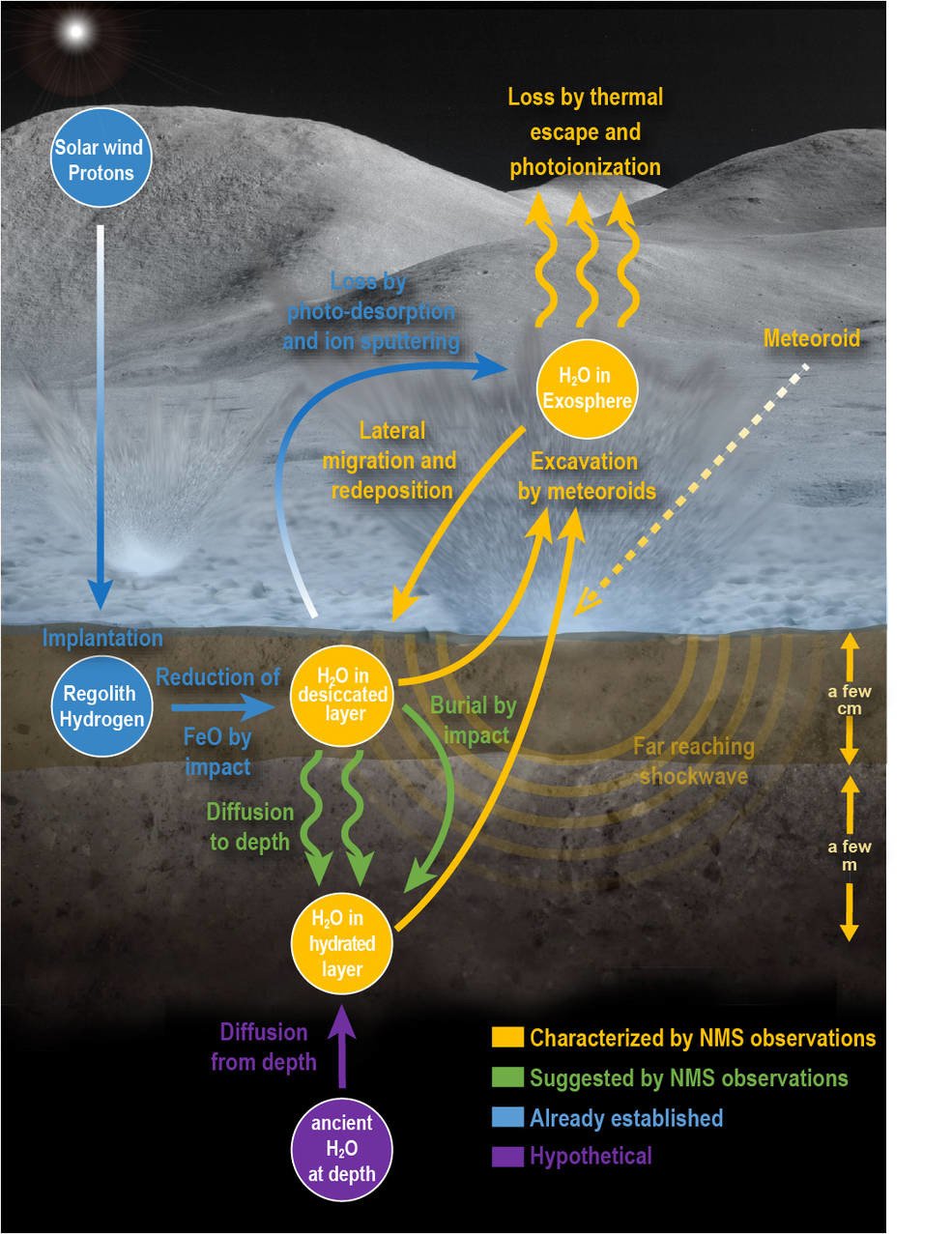Meteorite showers can blast water right out of the Moon, NASA finds (VIDEO)
The Moon’s surface bears the scars of eons of meteorite blasts, but these space rock strikes are also the key to an incredible new discovery about our satellite: it expels drops of water during meteorite showers.
NASA researchers found that meteorite blasts across the surface of the moon are powerful enough to force tiny drops of water out of the dusty lunar soil and into the atmosphere above.
“The lunar surface that’s releasing the water is being protected by a layer – a few centimeters – of dry soil that can only be breached by large micrometeoroids,”says planetary scientist at NASA and the University of Maryland Baltimore County, Mehdi Benna.
JUST IN: Scientists have discovered water is being released on the Moon during meteor showers! 💧🌑 This discovery provides a potential resource for future exploration, improves our understanding of the Moon's geologic past & continued evolution. Details: https://t.co/2zmOazTHL0pic.twitter.com/oONOrqHOBx
— NASA (@NASA) April 15, 2019
When these small meteoroids hit the Moon, the shockwave can force out the droplets of water that coat the grains of lunar soil lying below the drier surface layer. Most of the material in the impact crater is simply vaporized and escapes into space, but about one-third of the water forced out by the meteorite strike lands back down on the lunar surface.
The ejected water can be detected by sensitive NASA instruments on board the Lunar Atmosphere and Dust Environment Explorer (LADEE) spacecraft. By analyzing this data, the team discerned a clear pattern between these water emissions and meteorite showers.
Also on rt.com WATCH meteor whizz above Siberian city & go out with a BANGThe research means that trace amounts of water are dispersed across the surface of the Moon, which could be of huge interest and value to future space exploration missions.
As to the question of where the water originates, the team says it has eliminated the possibility of it coming from the meteorites themselves: “We know that some of the water must be coming from the Moon, because the mass of water being released is greater than the water mass within the meteoroids coming in,” said the second author of the research, Dana Hurley of the Johns Hopkins University Applied Physics Laboratory.
Benna, lead author of the water study, adds: “The water being lost is likely ancient, either dating back to the formation of the Moon or deposited early in its history.”

Like this story? Share it with a friend!













